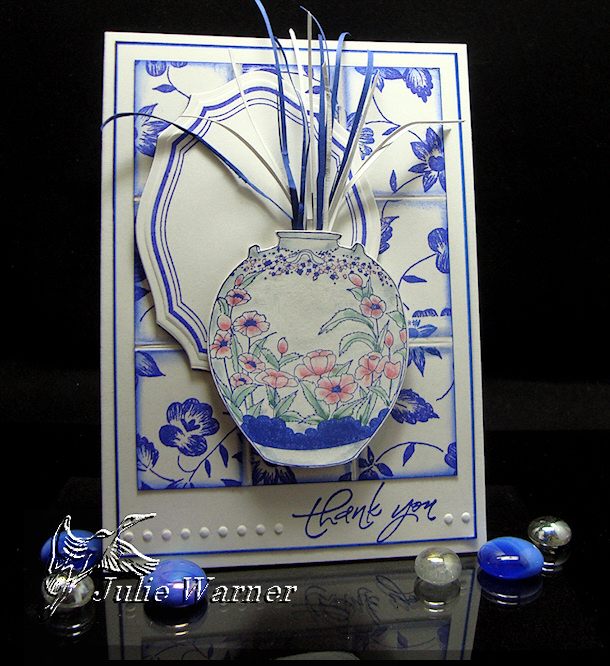


I’m so excited because I have a new Delft Tile tutorial over on Splitcoast today! It’s fun, easy and requires no special tools. And you get a beautiful Delft tile
background! I hope you’ll drop by and check it out.
Creative Ideas from Just Write Designs



I’m so excited because I have a new Delft Tile tutorial over on Splitcoast today! It’s fun, easy and requires no special tools. And you get a beautiful Delft tile
background! I hope you’ll drop by and check it out.
Click any picture to enlarge.
Supplies Needed:
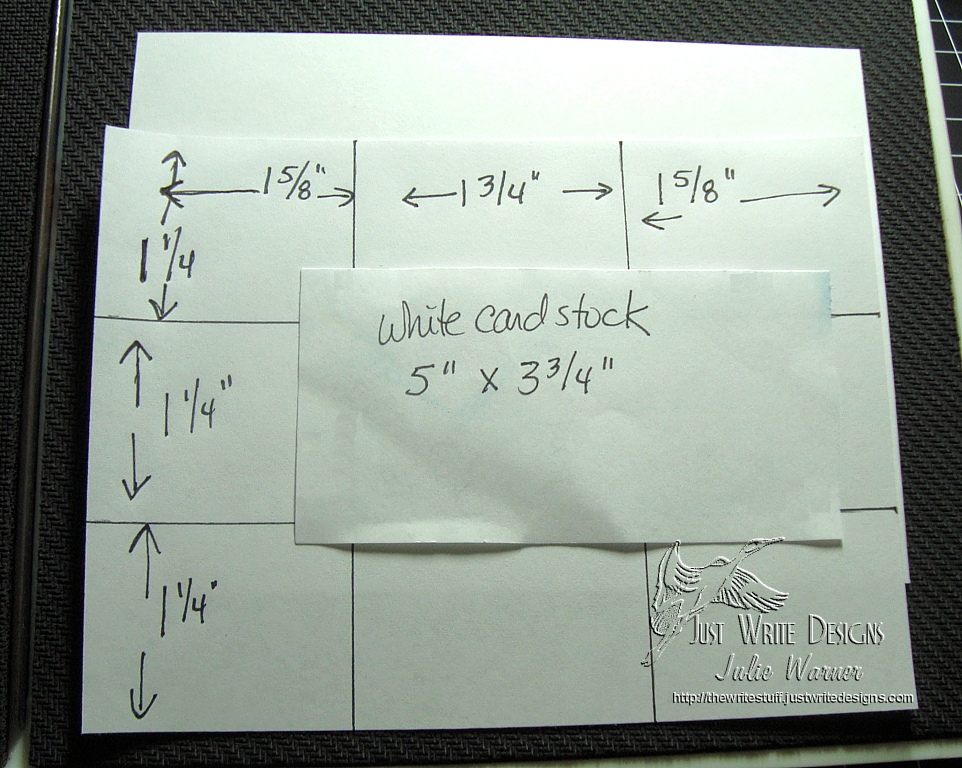
Step 1:
You may make your tile background any size by adjusting the dimensions of the score lines. For mine, I used a 5 x 3.75 inch piece and scored all the horizontal lines at 1.25 inch intervals. The vertical scores are 1 5/8, 1 3/4 and 1 5/8 as shown above. Score all lines all the way across and down so your card stock should look like the picture below.
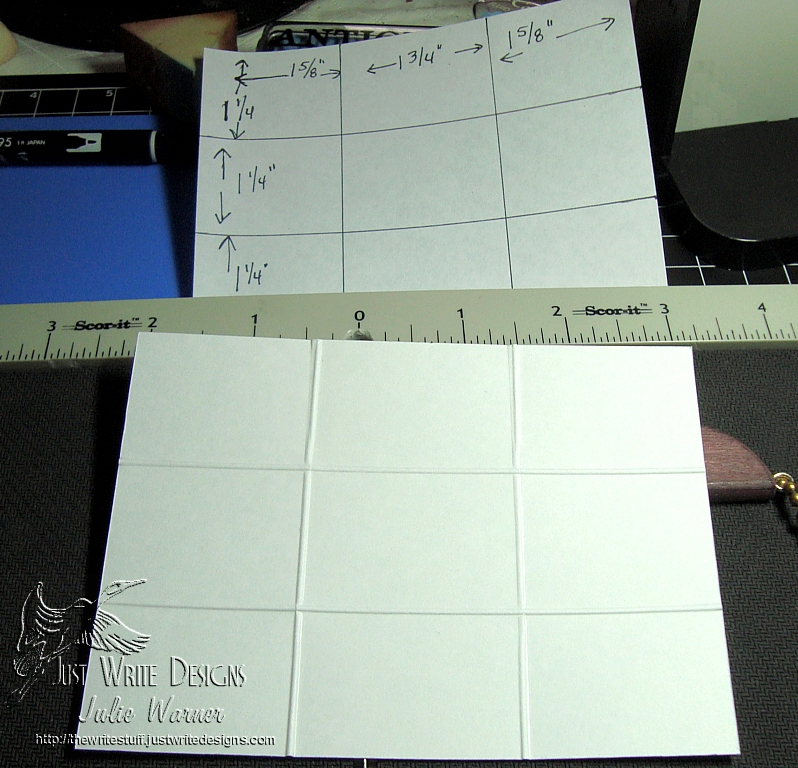
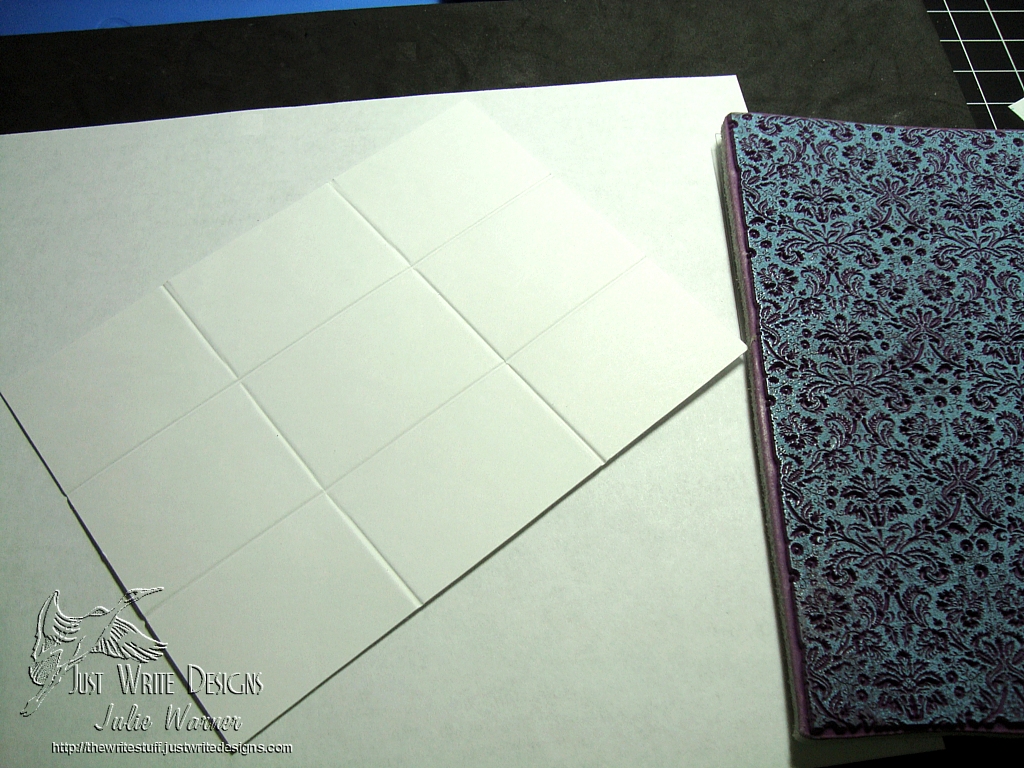
Step 2:
Turn your scored card stock over so that all scored lines are now indented. Ink your image and stamp onto the card stock.
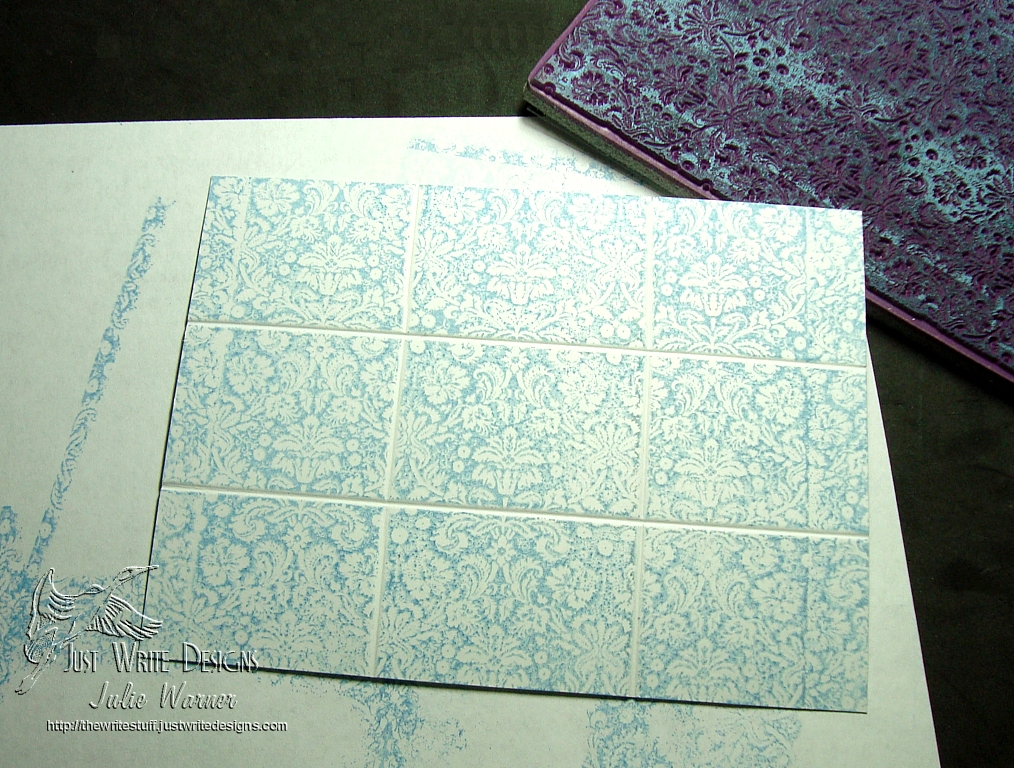
Your stamped card stock should be well on its way to looking like tile. Note the indented score lines mimic grout lines by preventing the image from stamping into them.
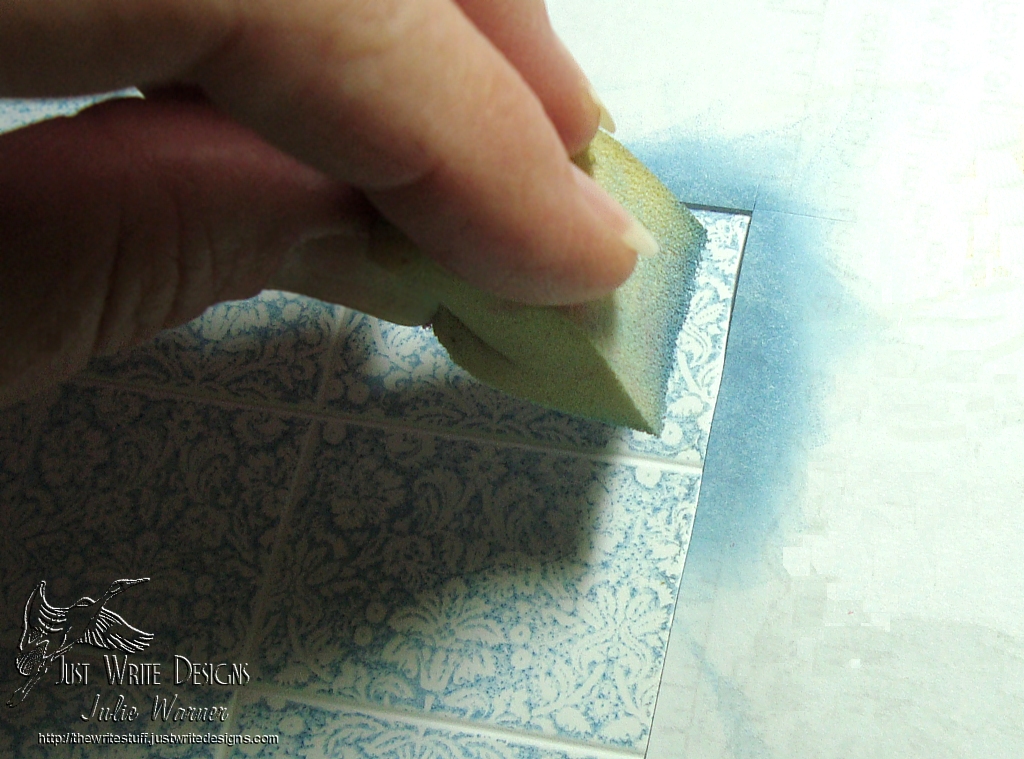
Step 3:
Cut a square inside corner in a piece of copy paper to use as a mask. Place the mask as shown and ink your cosmetic sponge with the same ink you used to stamp the image.
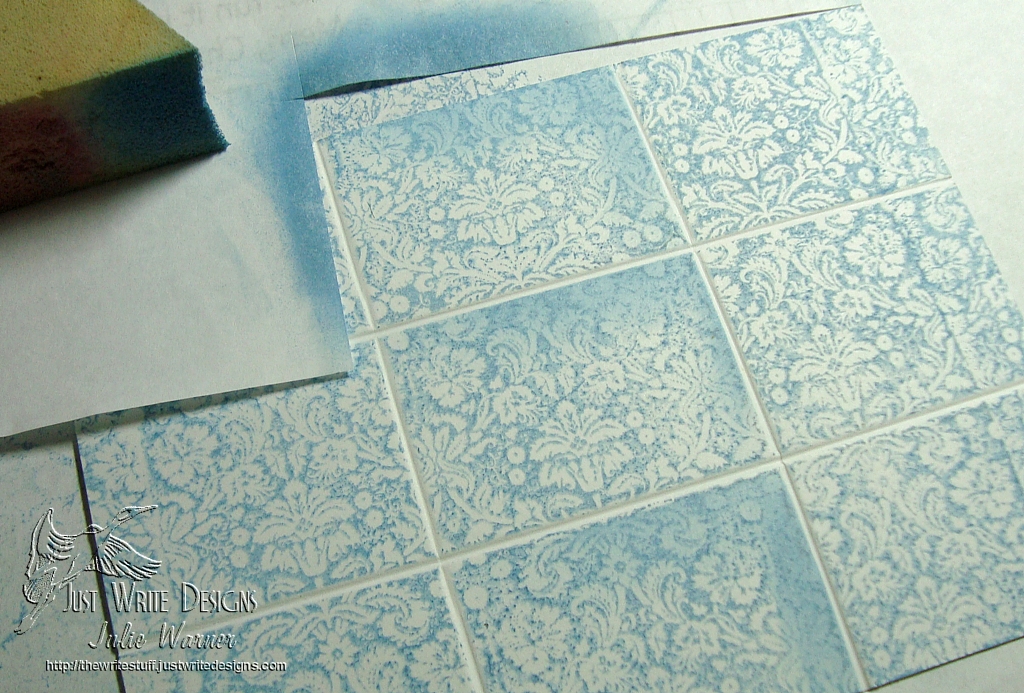
Move the mask around the corners as you go until all “tile” edges are lightly sponged.
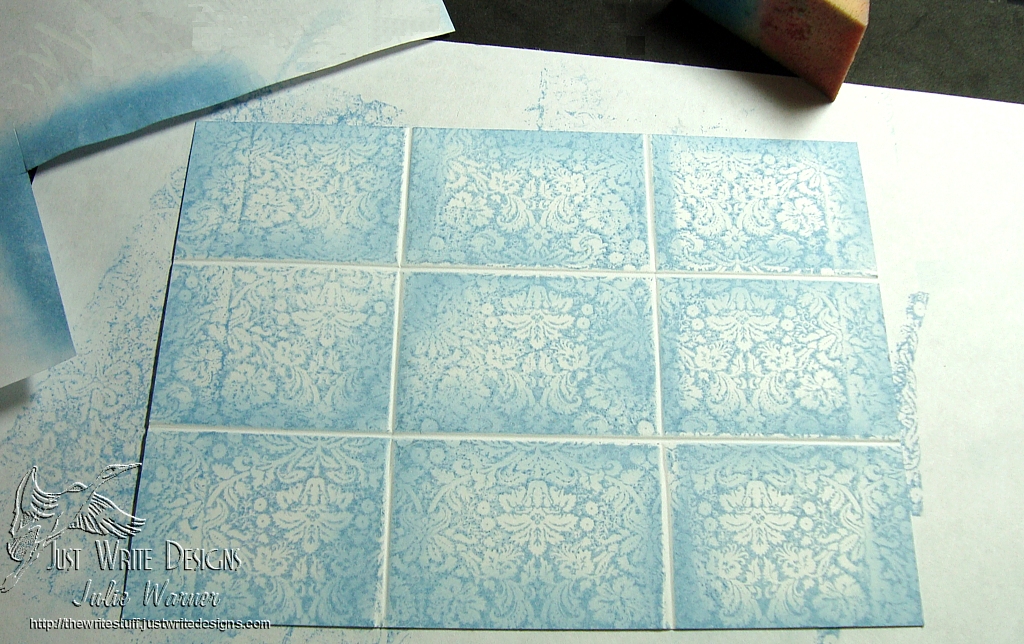
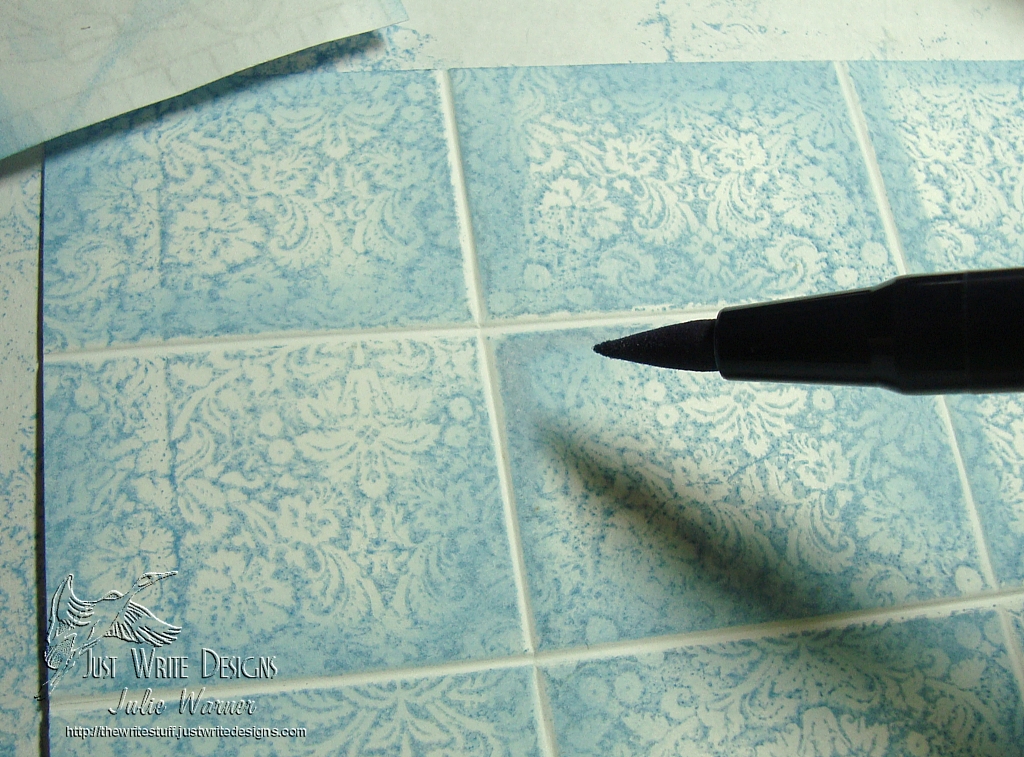
Step 4:
Use the light gray marker just at the very edges of each tile corner. This completes the “tile” appearance and adds depth to your tiles.
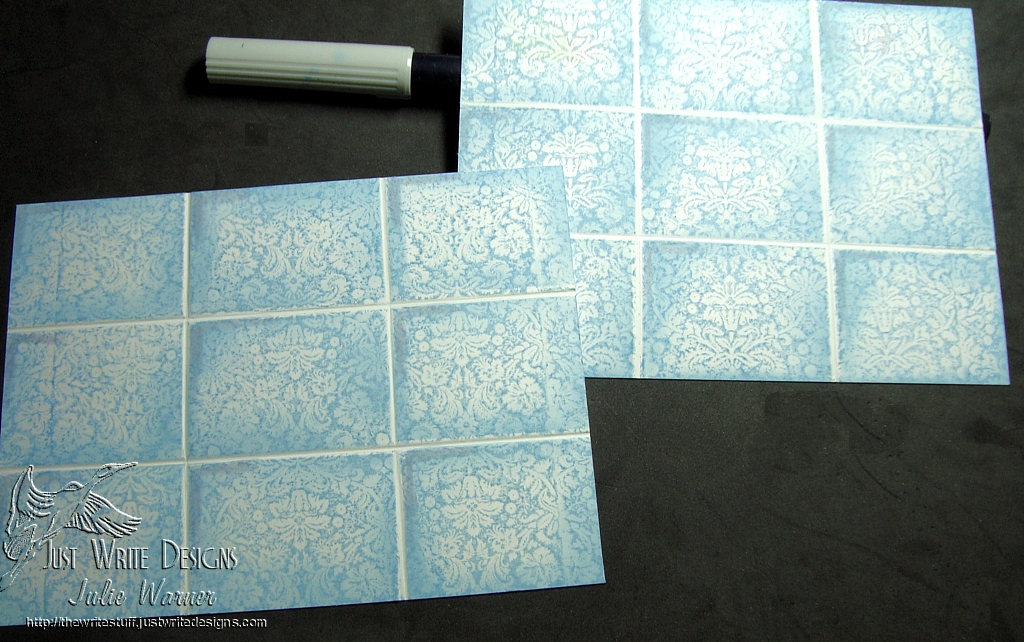
You can stop now or continue to add shading all the way around your “tiles”. The one sided shading is more of a light direction appearance while shading all around would be more of a head on light source.

Click on any picture to enlarge.
Supplies Needed:
Step One:
Brayer the entire piece of paper using the rainbow ink pad.
Step Two:
Crumple the piece of brayered paper into a ball.
Step Three:
Flatten out the paper and ink the creases using the direct to paper (DTP) technique. I’m using Tea Dye Distress ink.
Step Four:
Crumple the paper once again, flatten out and ink the creases with a darker ink. I’m using Ancient Page Sienna ink. Repeat steps 3 & 4 with a different ink color. I’m using the Distress Fired Brick ink.
Step Five: (Optional)
I wanted to tone the color down a little, so I used the Soft Wheat ink all over the paper.
Step Six:
Crumple the paper a final time, smooth out and ink the creases with the metallic gold pigment ink. I‘m using the Encore Ultimate Metallic Gold ink.
Step Seven:
Sprinkle on the embossing powder. Do not cover the entire paper. I used a little measuring spoon to drop the powder here and there. Tap off the excess and return to the jar. Heat the powder until melted and until any non coated areas are dry.
Step Eight:
Enjoy your finished background! Here’s a card example using a piece of this finished background. I used it for a backing layer for some color behind the leaves on the marigold panel.